36 Pericardial Disease
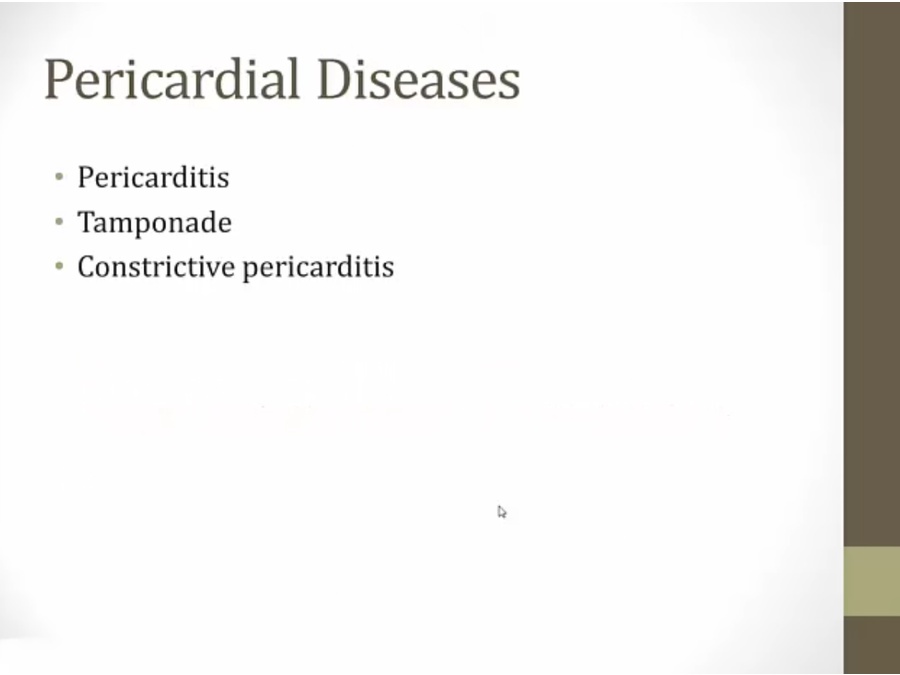
Pericarditis
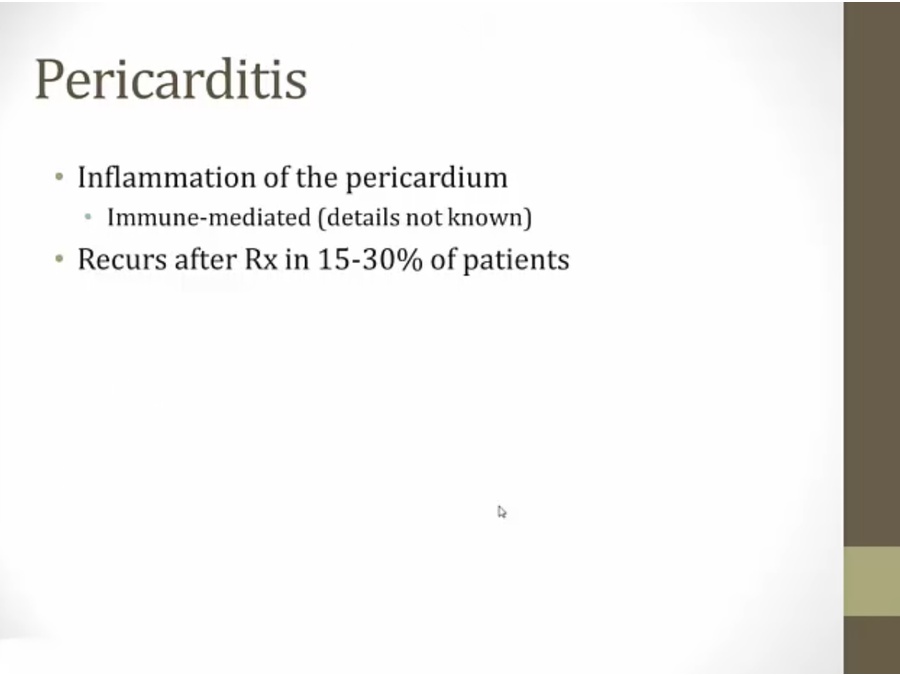

- fibrinous: not immune, extension of necrosis
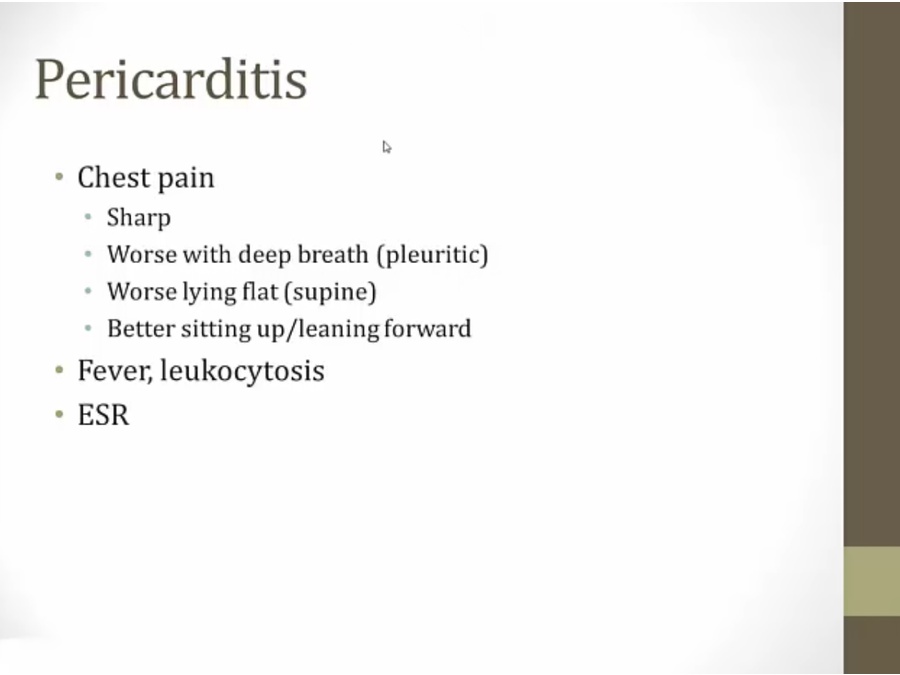
- ischemic chest pain not positional
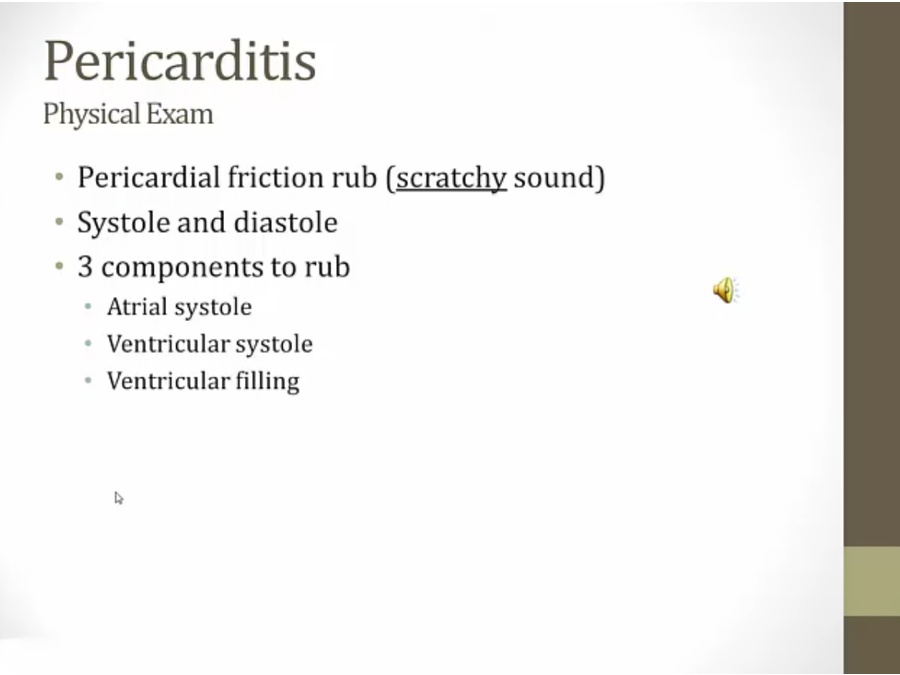

- T wave association with pericarditis
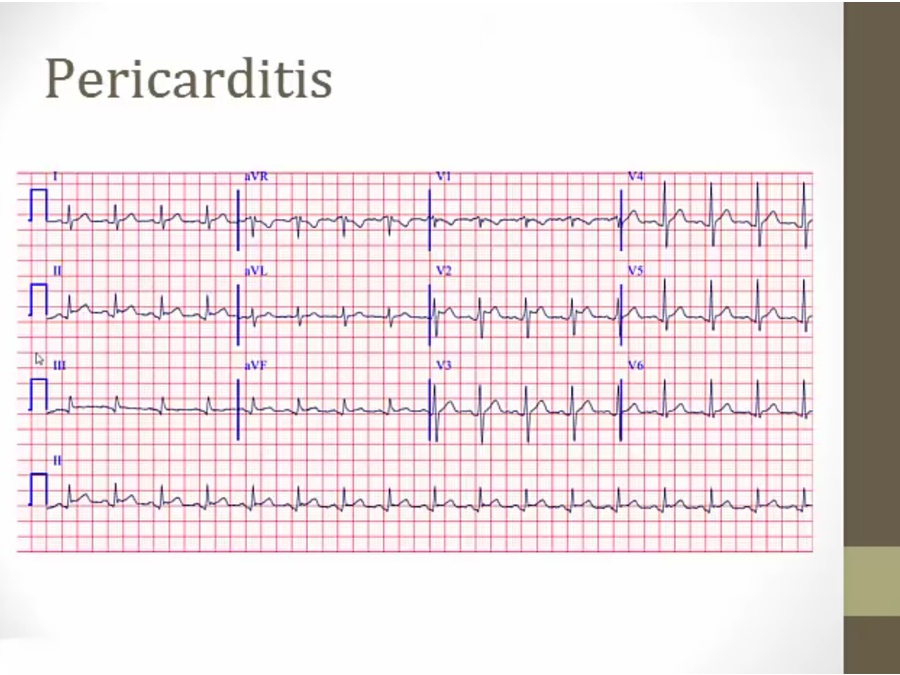
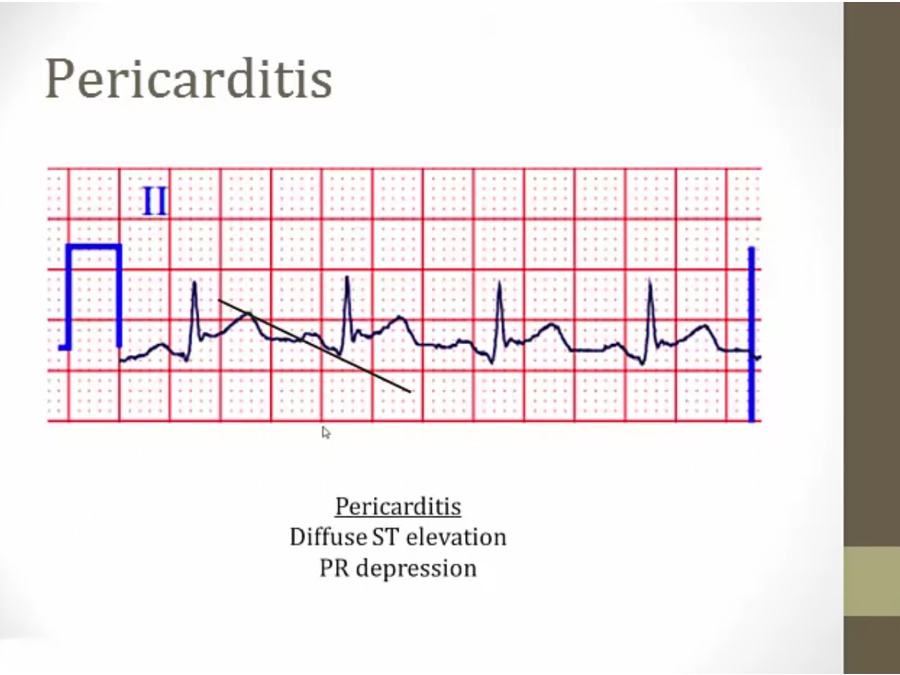
- P begins at higher point than where R point ends
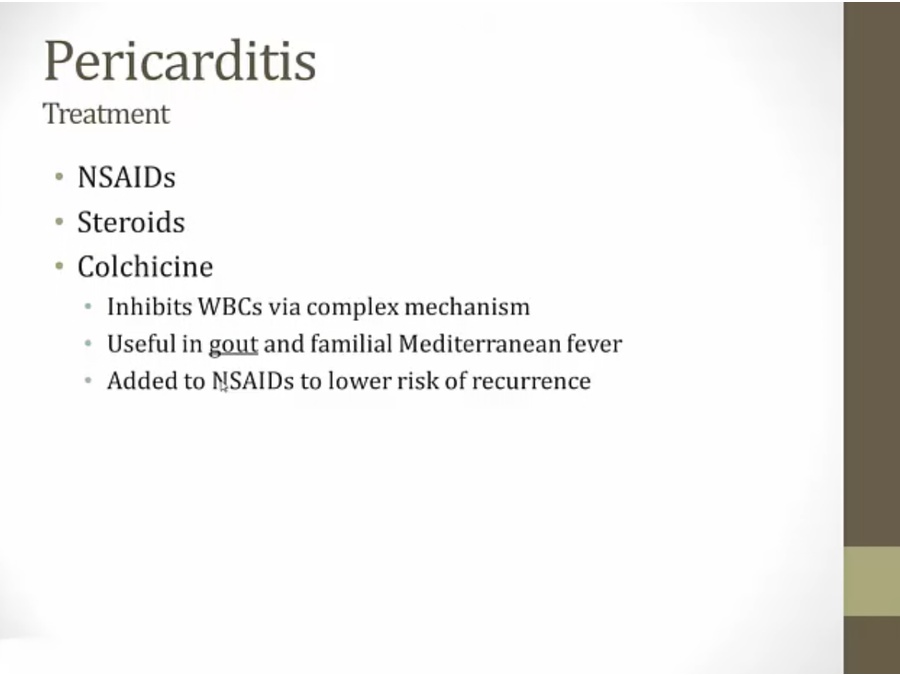
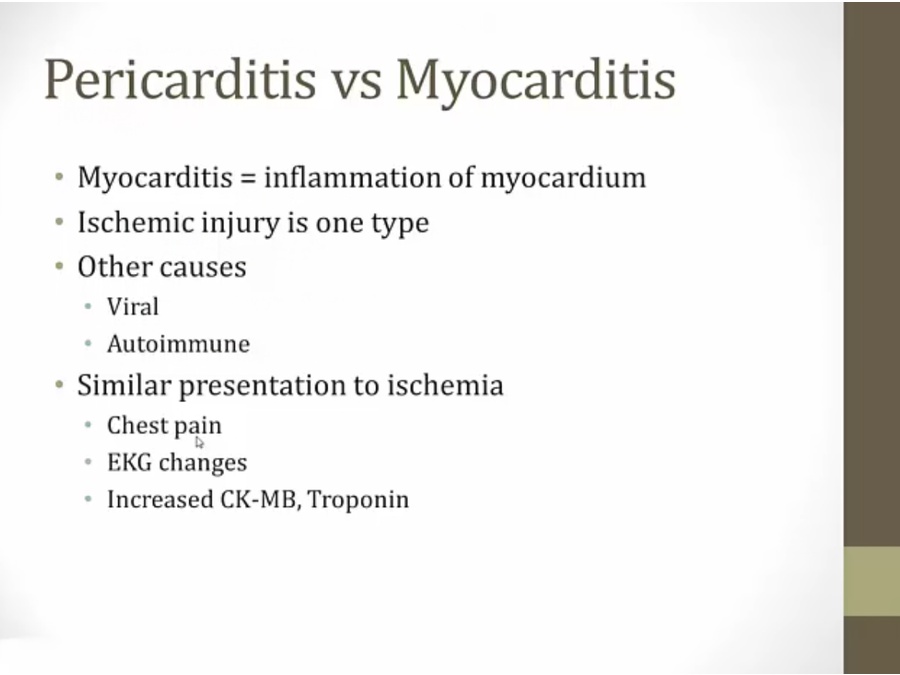
- inflammation of myocardium not from ischemia
Tamponade
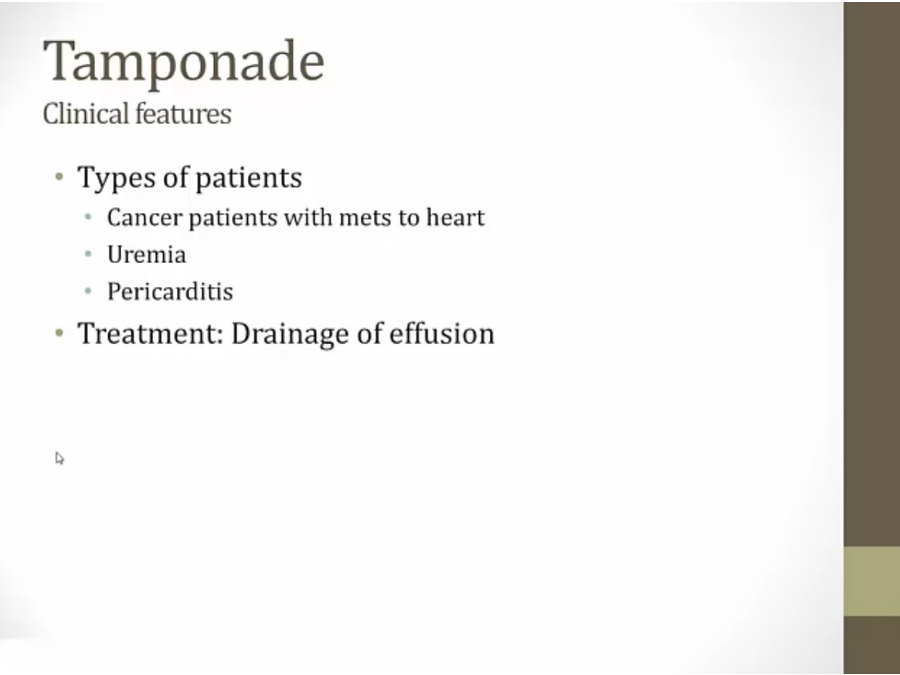
- cancer pts developing dyspnea: tamponade
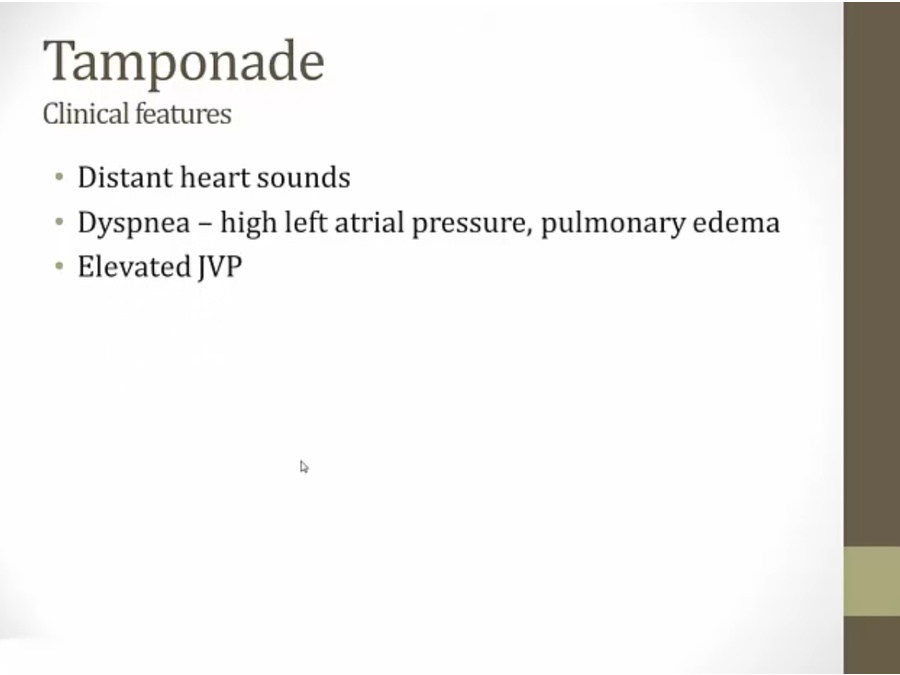
- wall of fluid muffle heart sounds
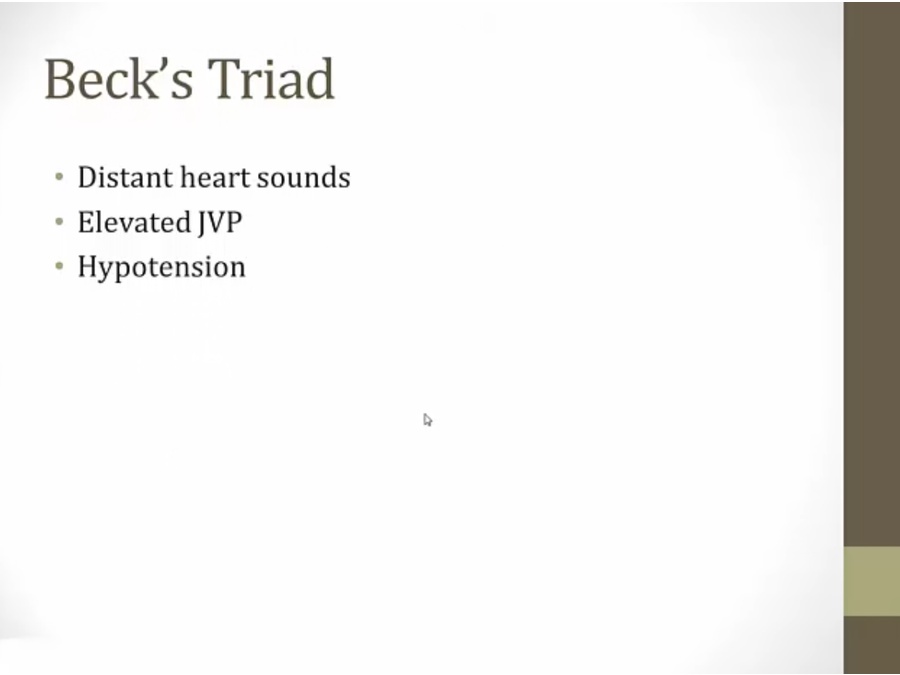
- usually hypotension only in acute
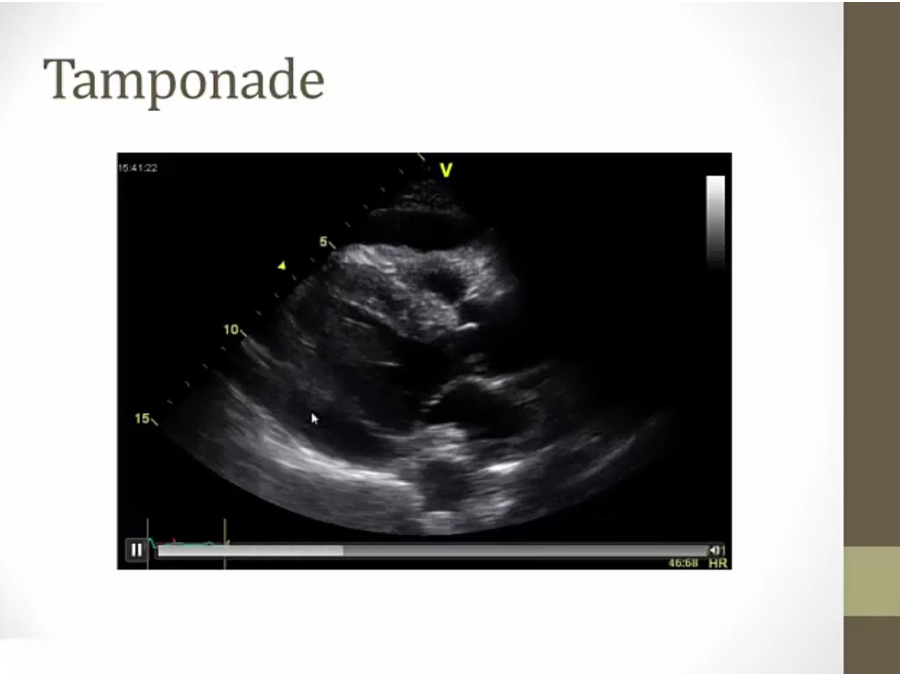
- black band around infralateral wall (lower left) and in front (top)
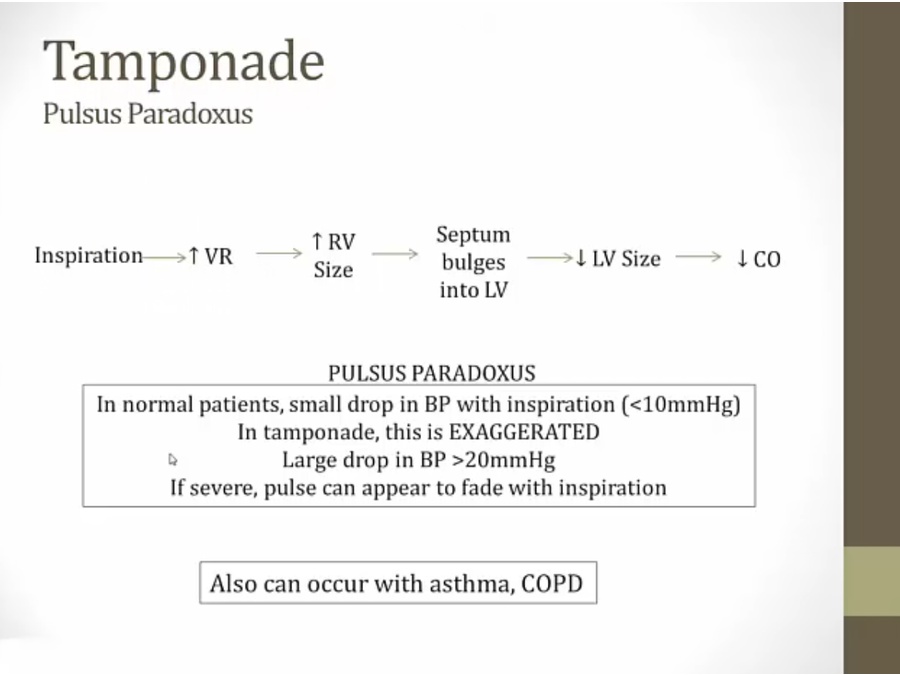
- inspire, push diaphragm down, compress abdomen vessels (IVC), thorax vessels dilate, increased venous return
- tamponade: RV cannot increase in size, all its increase in size bulges into LV
- asthma/COPD: exaggerated changes in thoracic pressure may leads to hemodynamic changes
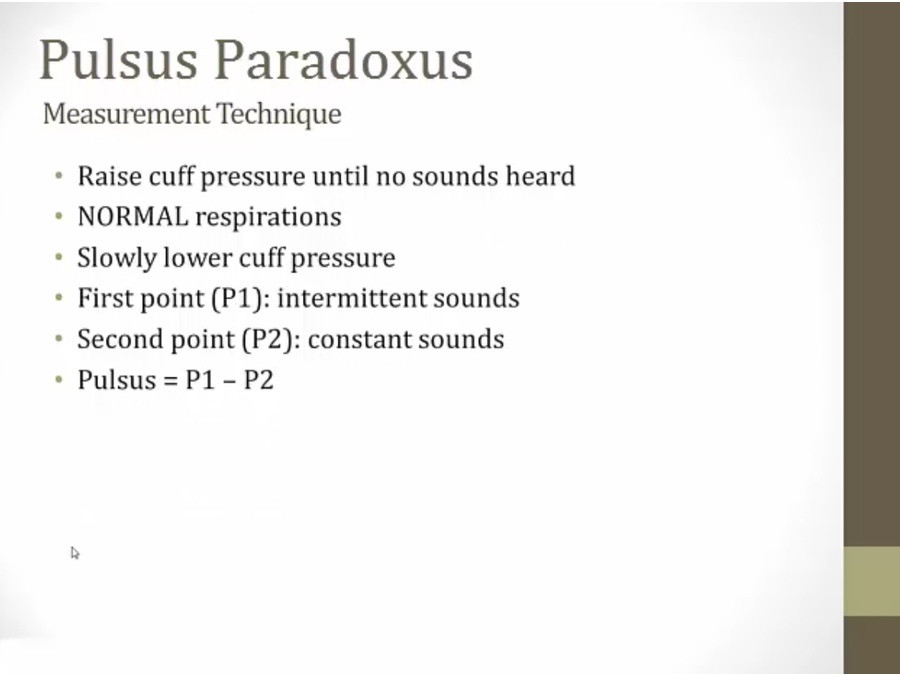
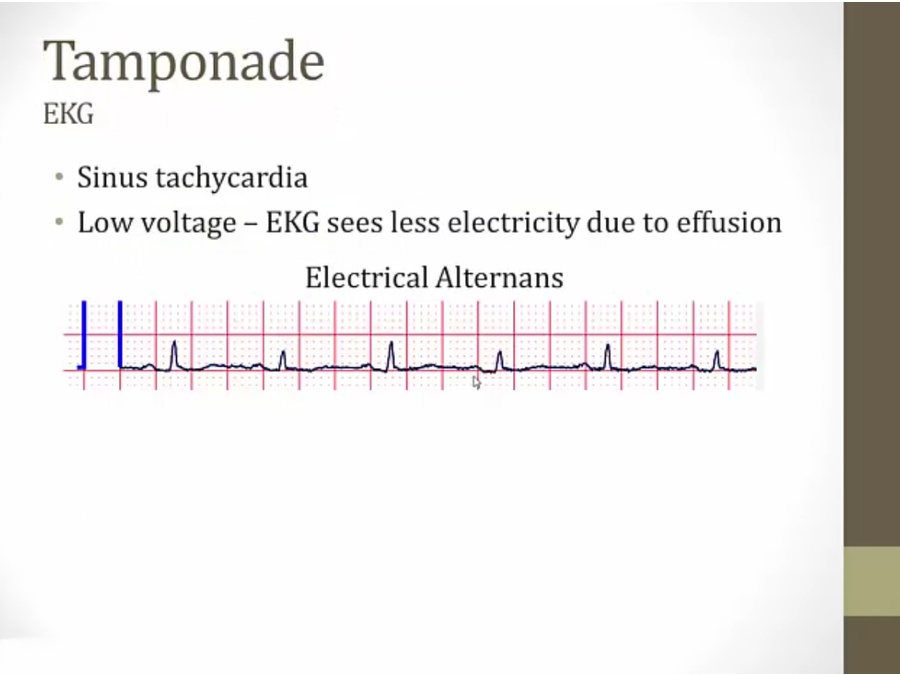
- tachycardia: increased sympathetic
- EKG: rare, tall and short QRS, heart swinging inside fluid
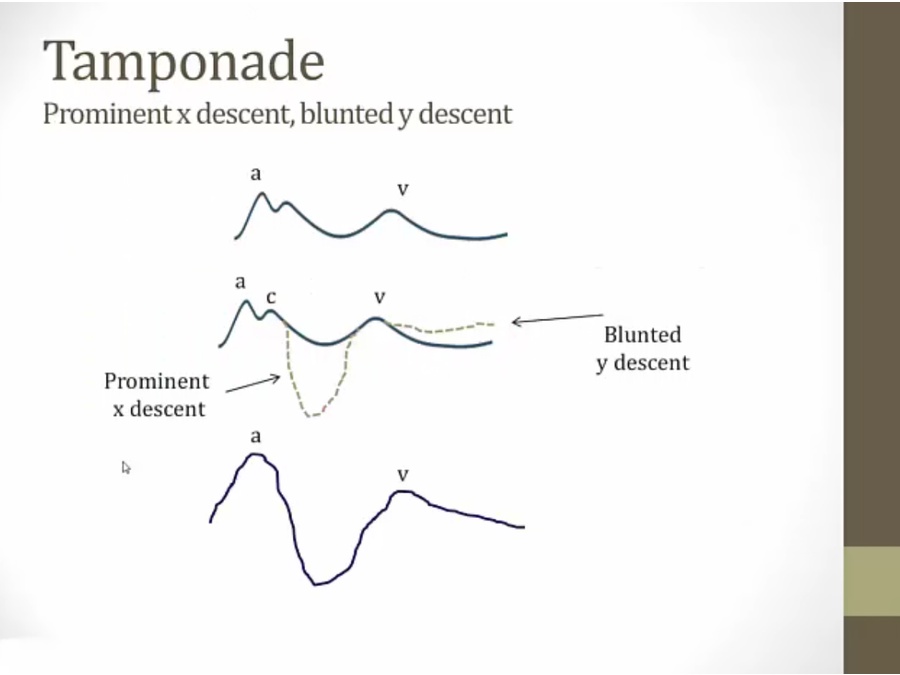
- x descent: RV contraction
- tamponade: RV contraction, makes room in pericardium for fluid to move away from RA to RV, allow RA to relax more, steep x descent
- y descent: filling of RV impaired
- late diastolic collapse of RA
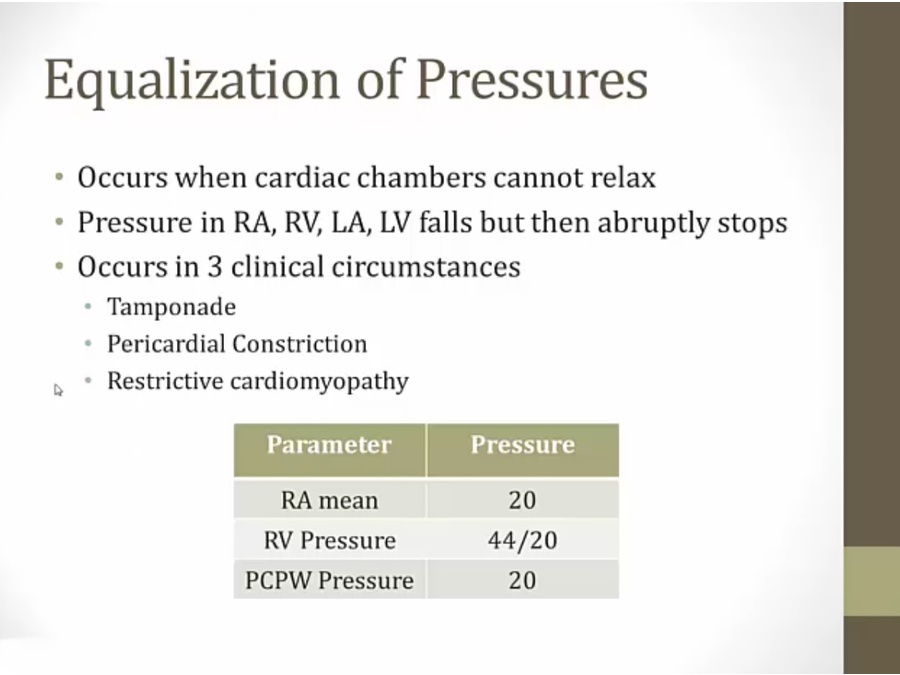
Constrictive
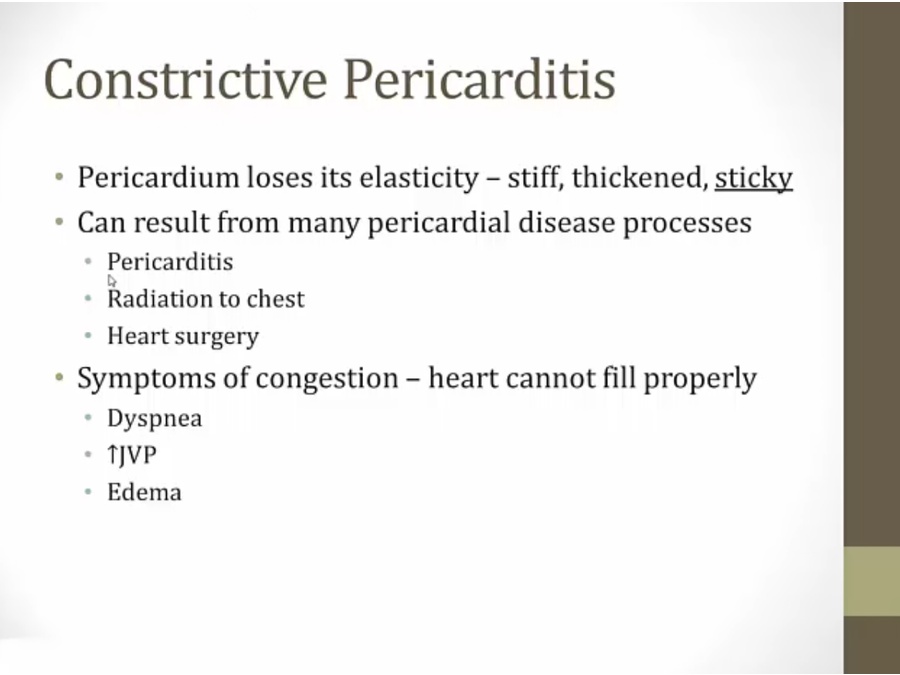
- viral carditis
- RV stuck to pericardium
- also caused by miliary TB (immigrant)
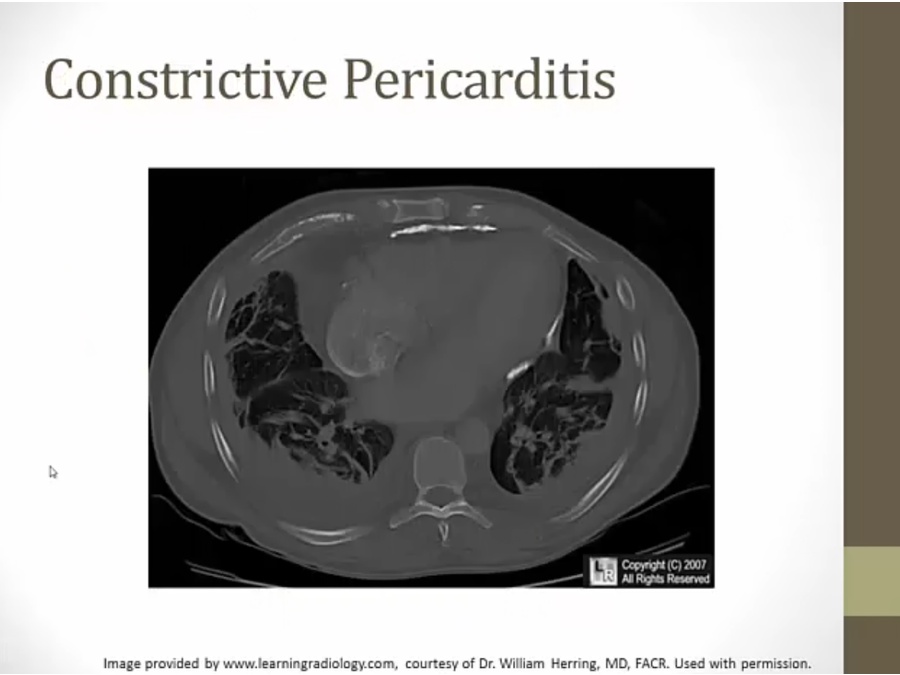
- bright white material surrounding heart, Ca
- long standing inflammation: calcified
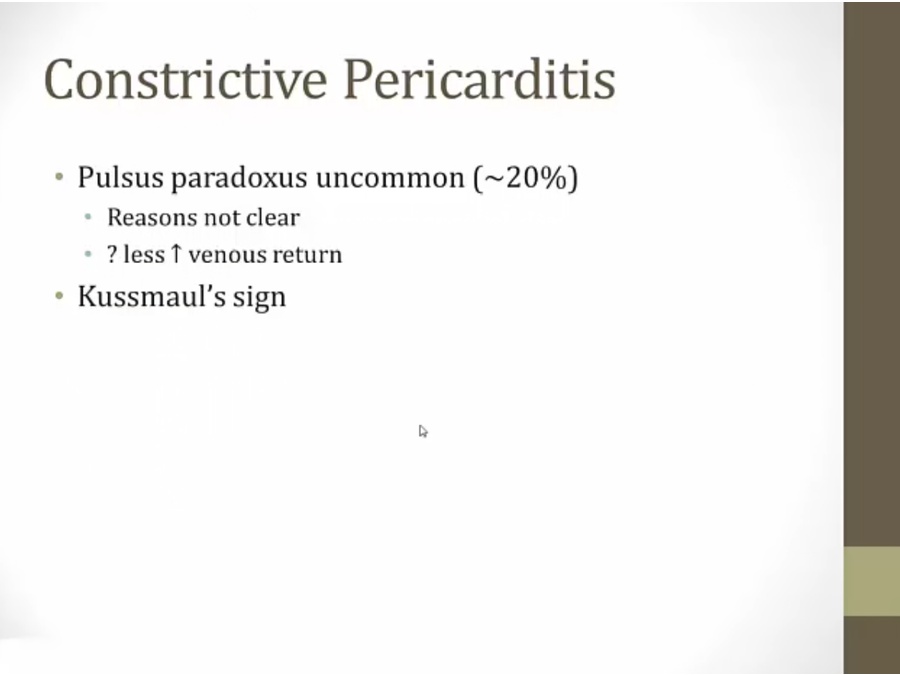
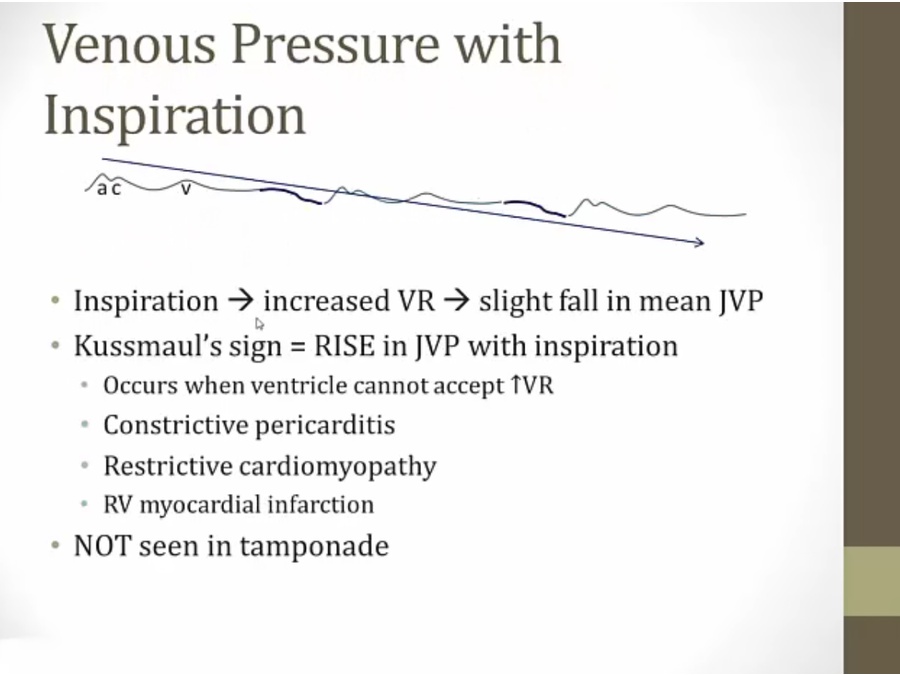
- any disease where can't accept venous return leads to kussmaul's sign
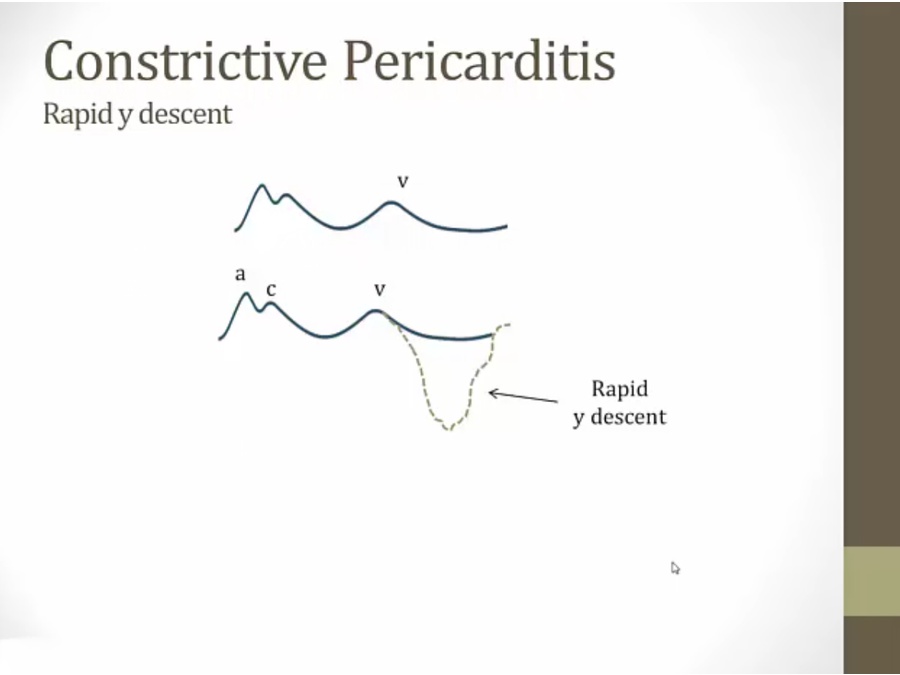
- constrictive: RV adhered to pericardium, contracts in systole, and snaps back in diastole, pulled towards pericardium, then it hits the calcified shell, and pressure shoots back up
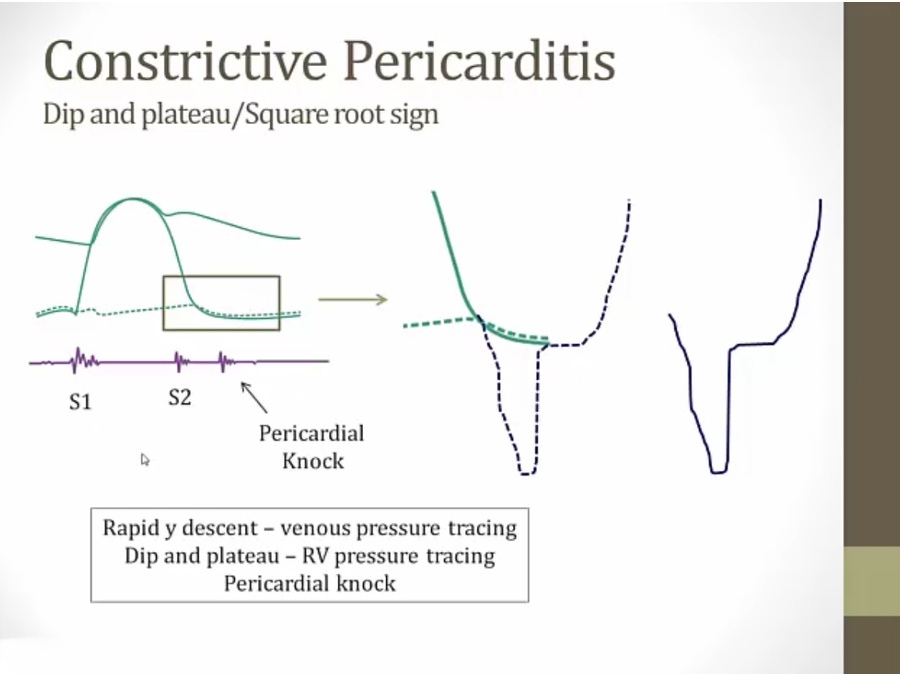
- square root sign: RV falls much more rapidly and deeper than normal, same physiology as RA tracing
- pericardial knock: abrupt stop and shoot up pressure, similar to S3
Links to this note
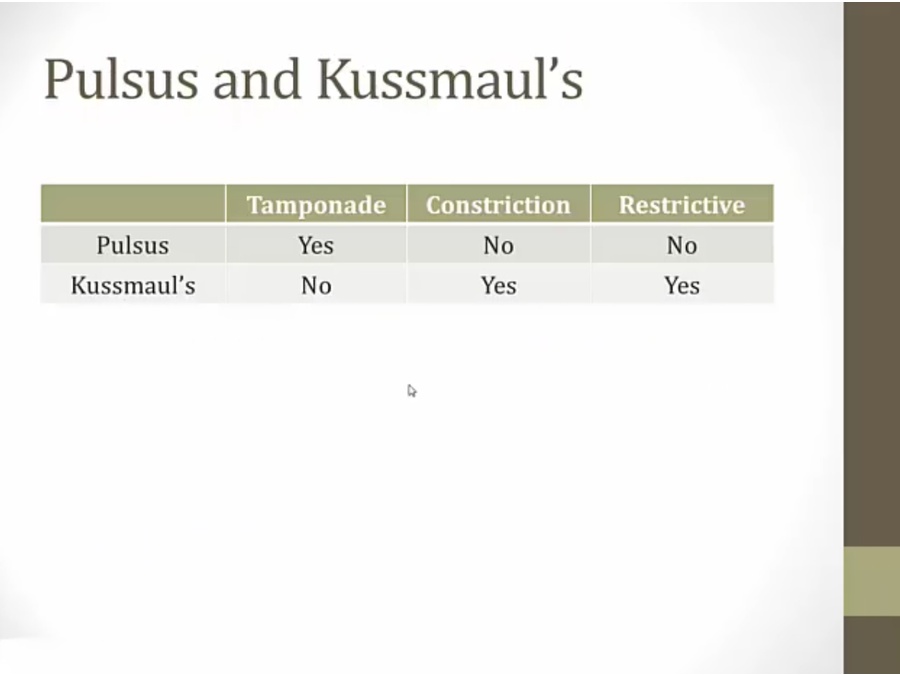
- Tamponade: RV is able to distend and fill, thus no kussmaul. However, RV fills by pushing septum to LV, thus pulsus
- restrictive: restricting substance, RV cannot accept venous return, and septum frozen
- constriction: RAP goes up in inspiration (Kussmaul); however, increased pressure is not passed along to septum

























